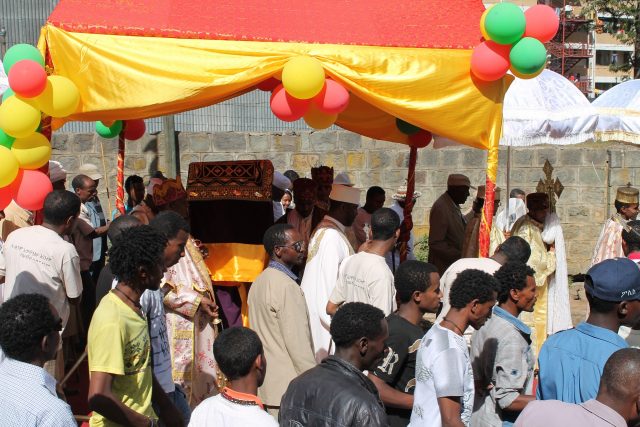The Amharic language, also known as Amarinya or Kuchumba, is the second most popular Semitic language after Arabic and is considered to be the most widely spoken language in the Horn of Africa. It belongs to the Ethiosemitic group of languages.
Since the late 12th century, the Amharic language is used by Amhara people as the working language of courts, language of trade and everyday communications, the language used by the military, and the Ethiopian Orthodox Tewahedo Church. Today, the Amharic language is the official language of Ethiopia.
In the early 21st century, there were about 21.6 million people who speak Amharic as a native language in Ethiopia. Also, there were about 4 million secondary speakers in the country. Outside Ethiopia, there were about 3 million people who spoke the Amharic.
This Afro-Asiatic language is widely spoken in major cities and towns of Ethiopia and is considered to be the official working language in the country. Also, the Amharic language is used as the official working language in several of the states within the federal system. Amharic is also known as a language of the Ethiopian Jewish communities. It is widely used in such countries as Ethiopia and Israel. It is interesting to know that according to the Language Access Act of 2004, the Amharic language has become one of the six non-English languages in Washington DC used to provide government services and education. Furthermore, the Amharic language is used by the followers of the Rastafari religion all across the world as the religion states Amharic as a holy language.
The Amharic language is written left-to-right using Amharic Fidel. Amharic Fidel is known as a slightly modified form of the alphabet used for writing the Geʿez language. The written language is made up of 33 basic characters. Each character has seven forms depending on which vowel is to be pronounced in the syllable. It is important to know that today, there is no agreed way of transliterating Amharic into Roman characters.
The Amharic language was strongly influenced by such Cushitic languages as Oromo and the Agaw. Also, Amharic has some affinities with Tigre, Tigrinya, and the South Arabic dialects. Although there are some dialects of Amharic, they are not heavily differentiated from one another.




